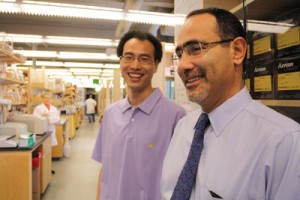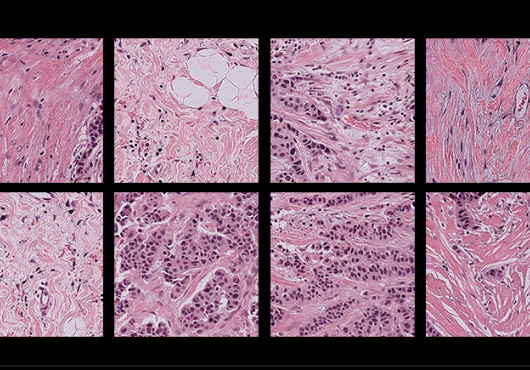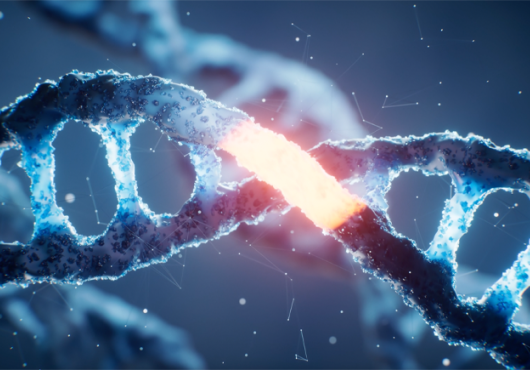Building on a decade of discoveries concerning obesity’s role in Type 2 diabetes and related metabolic disorders, researchers at the Harvard School of Public Health have uncovered surprising roles for lipid and calcium-processing abnormalities in the liver. By correcting these problems in a mouse model, the team reversed high blood-glucose levels, insulin resistance and other metabolic hallmarks of Type 2 diabetes.
As the related epidemics of obesity and diabetes escalate around the world, “the discovery of a faulty metabolic mechanism in fatty liver tissue opens new opportunities to consider for therapeutics,” said Gökhan Hotamisligil, the J.S. Simmons Professor of Genetics and Metabolism and chair of the Department of Genetics and Complex Diseases at HSPH. His team reported their findings in the May 2 issue of Nature.

The chain of molecular events by which obesity disrupts metabolism causes a domino effect of damage: high blood pressure, cholesterol abnormalities and resistance to insulin, a prelude to diabetes in which cells are unresponsive to the hormone and cannot efficiently make energy from blood sugar. In addition to diabetes, obesity has been linked to cardiovascular, liver and neurodegenerative diseases and certain cancers.
Stressed OutThe Hotamisligil lab had established chronic inflammation as a prime cause of metabolic disruption in obesity, implicating the organelle known as the endoplasmic reticulum (ER) and tracing insulin resistance and Type 2 diabetes to ER overload, or ER stress, as obesity develops. Subsequently, his group and others observed similar ER-stress-related problems in human obesity.
Until the Hotamisligil lab elucidated the ER’s role in regulating metabolism, the membranous organelle was known mainly for manufacturing and trafficking proteins and for quality control. Why the ER fails in obesity was a mystery for the lab to solve.
HSPH Research Associate Suneng Fu, first author of the Nature paper, tackled that mystery by comparing the ER in fat and lean liver tissues. Instead of looking at one possible mechanism at a time, he mapped the organelle’s activities comprehensively.
Fu developed a methodology to purify the ER from lean and obese tissues, then isolated and identified each of the proteins and lipids present in the ER. HSPH collaborators Alexander Ivanov, research scientist, and Steven Watkins, visiting scientist, did the proteomic and lipidomic analyses, respectively.
The researchers anticipated that in obesity, the primary driver of ER stress was a flooding of the ER factory with protein. (Picture a conveyor belt on overdrive.) But in what Hotamisligil called a “shocking surprise,” they found that obese samples had fewer proteins and more lipids than did lean.
“Obesity was spurring a switch in the ER from synthesizing proteins to synthesizing lipids,” Hotamisligil said.
Lipid ChangesLooking closely at lipid changes in the fatty tissue, the researchers noted that two lipids critical to the structural integrity of the ER membrane, phosphatidylcholine and phosphatidylethanolamine—PC and PE—were the most altered. If the membrane were affected, they reasoned, perhaps its tubular channels, which were transporting calcium, were as well.
Hotamisligil likens the ER and its channels to a 12-cylinder Formula One race car, one that runs on calcium instead of just guzzling fuel in the form of ATP. The ER needs calcium to make and fold functional proteins. While searching the literature on channel function, the team uncovered a 25-year-old finding that a precise ratio of PC to PE was necessary for the function of proteins involved in channeling calcium. Interestingly, this ratio precisely resembled that measured by the team in the liver ER in normal, lean mice. In the fatty tissue, on the other hand, this ratio was high—perhaps explaining why, as the team noted, calcium was escaping through the ER membranes in obese liver.
To fix the leak, the researchers used two strategies. Through genetic manipulation they corrected the PC/PE ratio by blocking the effect of an enzyme, PEMT. They also used a virus to deliver to the fatty livers of lab mice a protein, SERCA, known to be responsible for pumping calcium into the ER.
Both maneuvers led to the same result: in essence, a reversal in the mice of metabolic problems. “ER stress went away, blood glucose levels fell back to normal, insulin sensitivity was restored and fatty liver was resolved,” said Hotamisligil.
In obesity, it is an increased synthesis of lipids, not of proteins, that disrupts ER function and leads to stress, the researchers concluded. Looking ahead to potential drug therapies, it might be possible to restore lipid metabolism and calcium homeostasis to normal, Hotamisligil said, adding that dietary solutions are also worth exploring.
The liver isn’t the only site wherein obesity disrupts metabolism and ignites metabolic disease by stressing the ER, Hotamisligil notes. ER stress has been observed in adipose tissue and in the pancreas and brain. In these tissues, too, he said, “we’re working to decode the ER landscape.”
—Ellen Barlow
To learn more, students may contact Gökhan Hotamisligil at ghotamis@hsph.harvard.edu.


